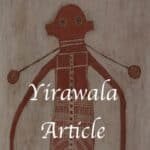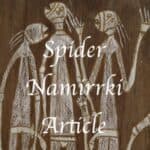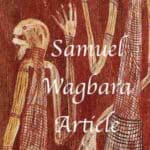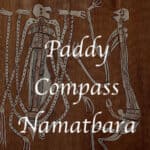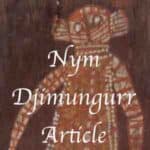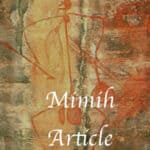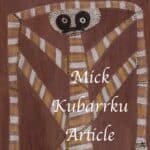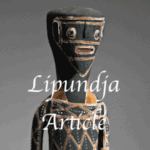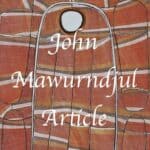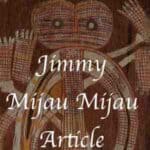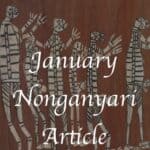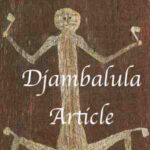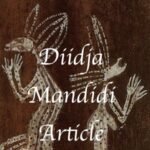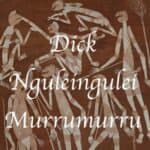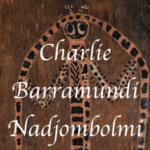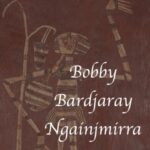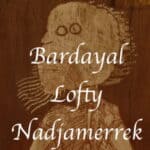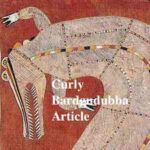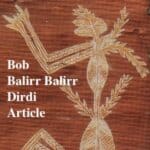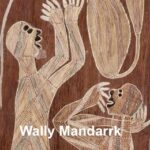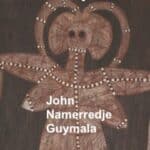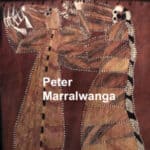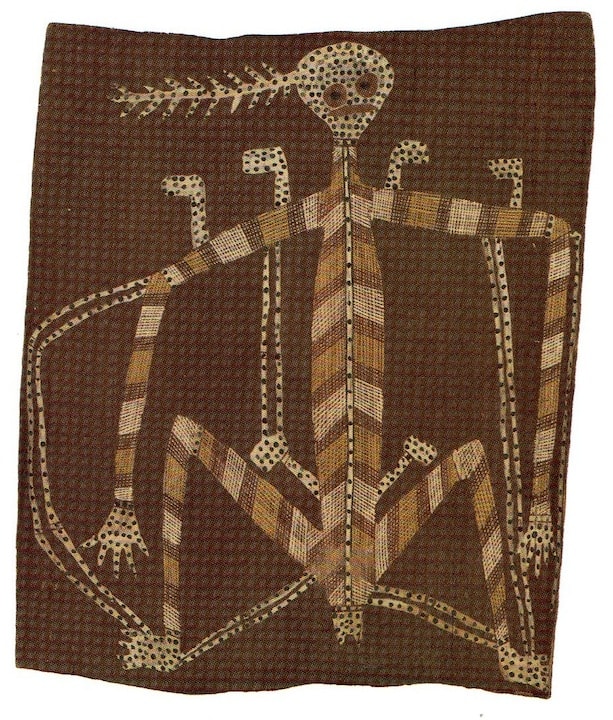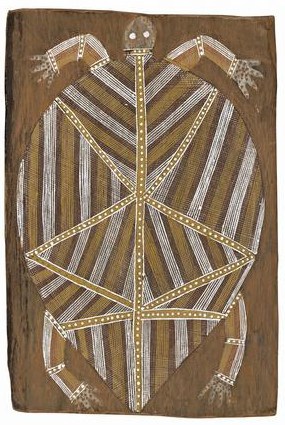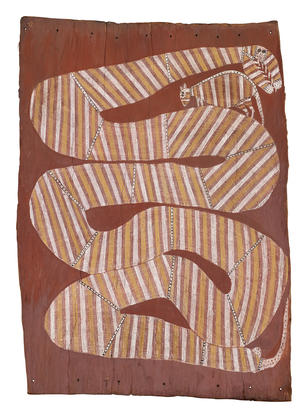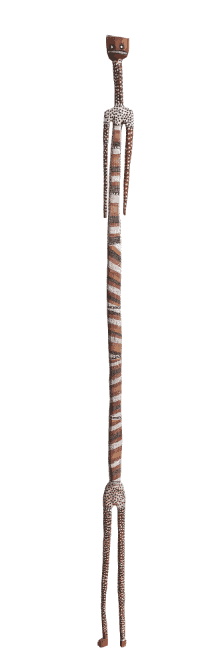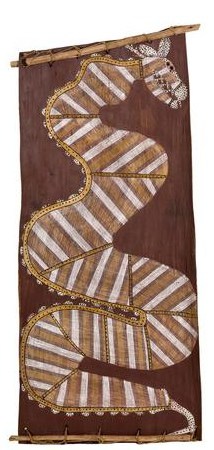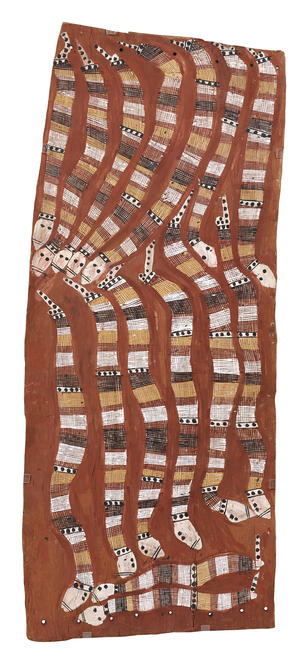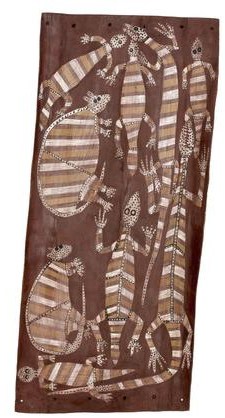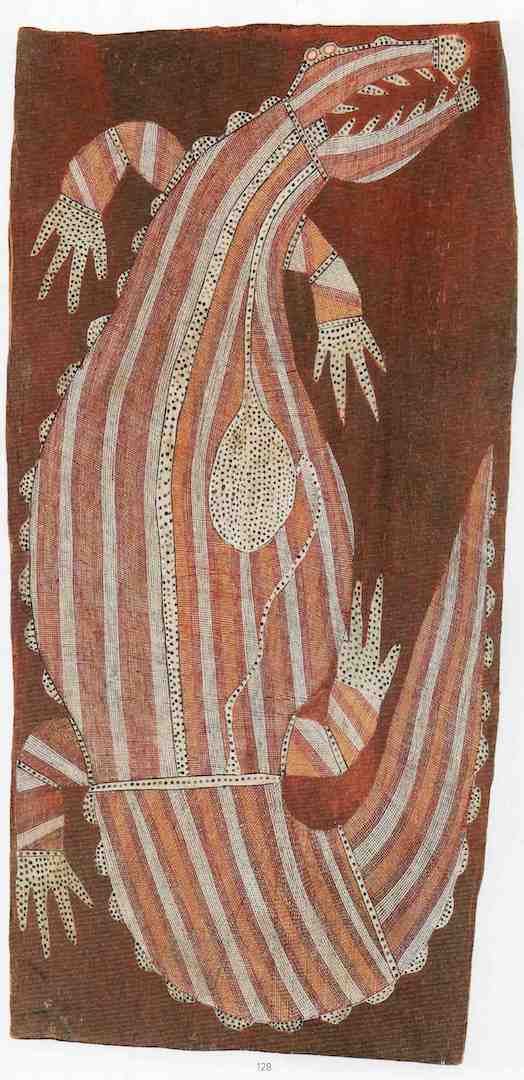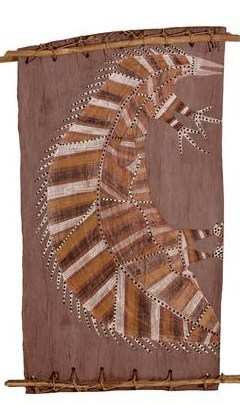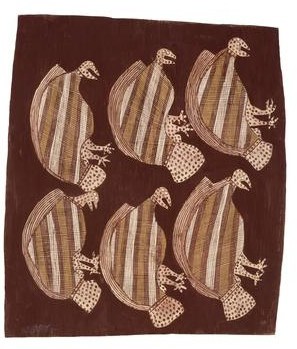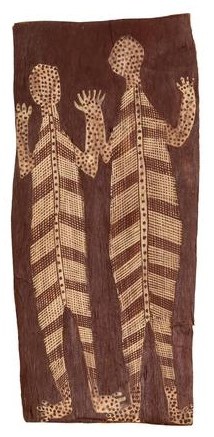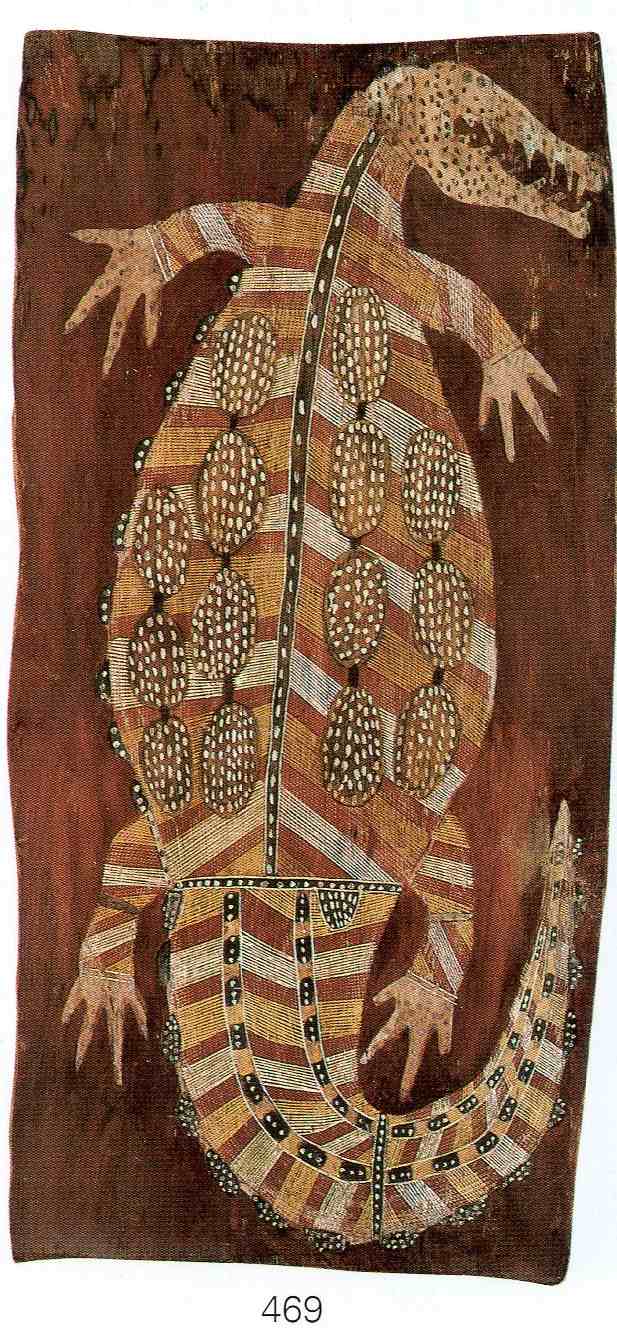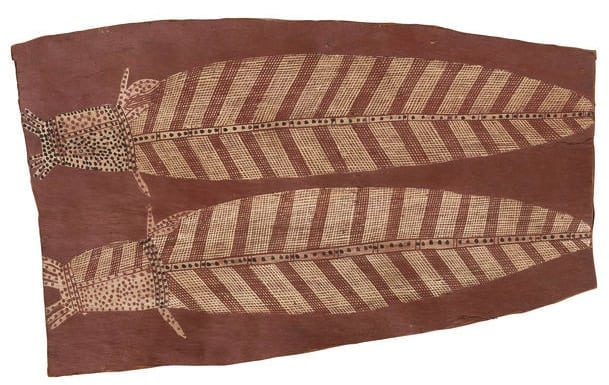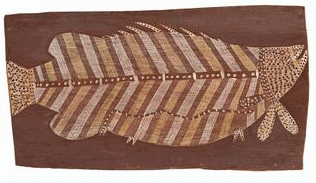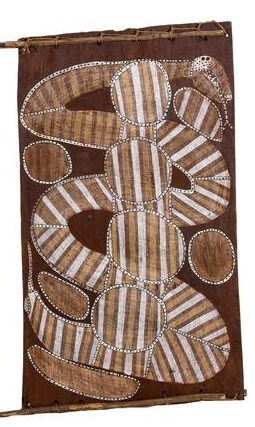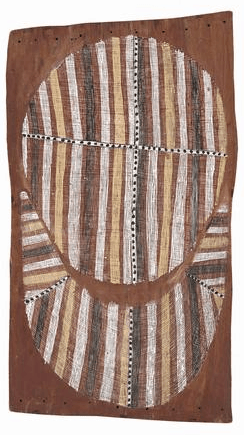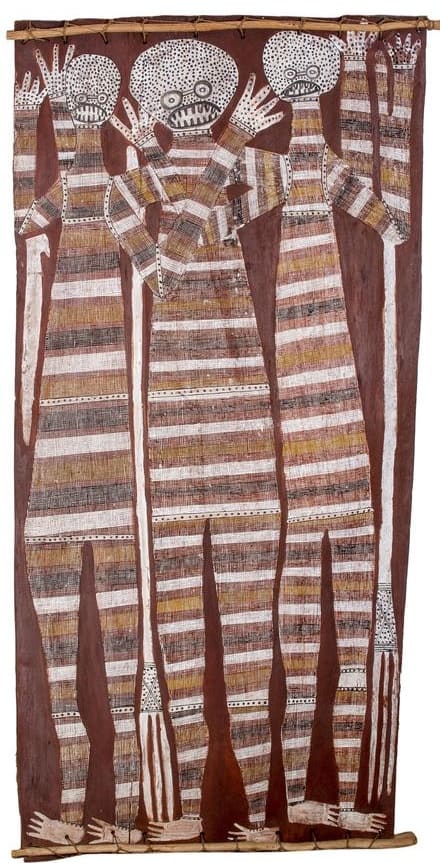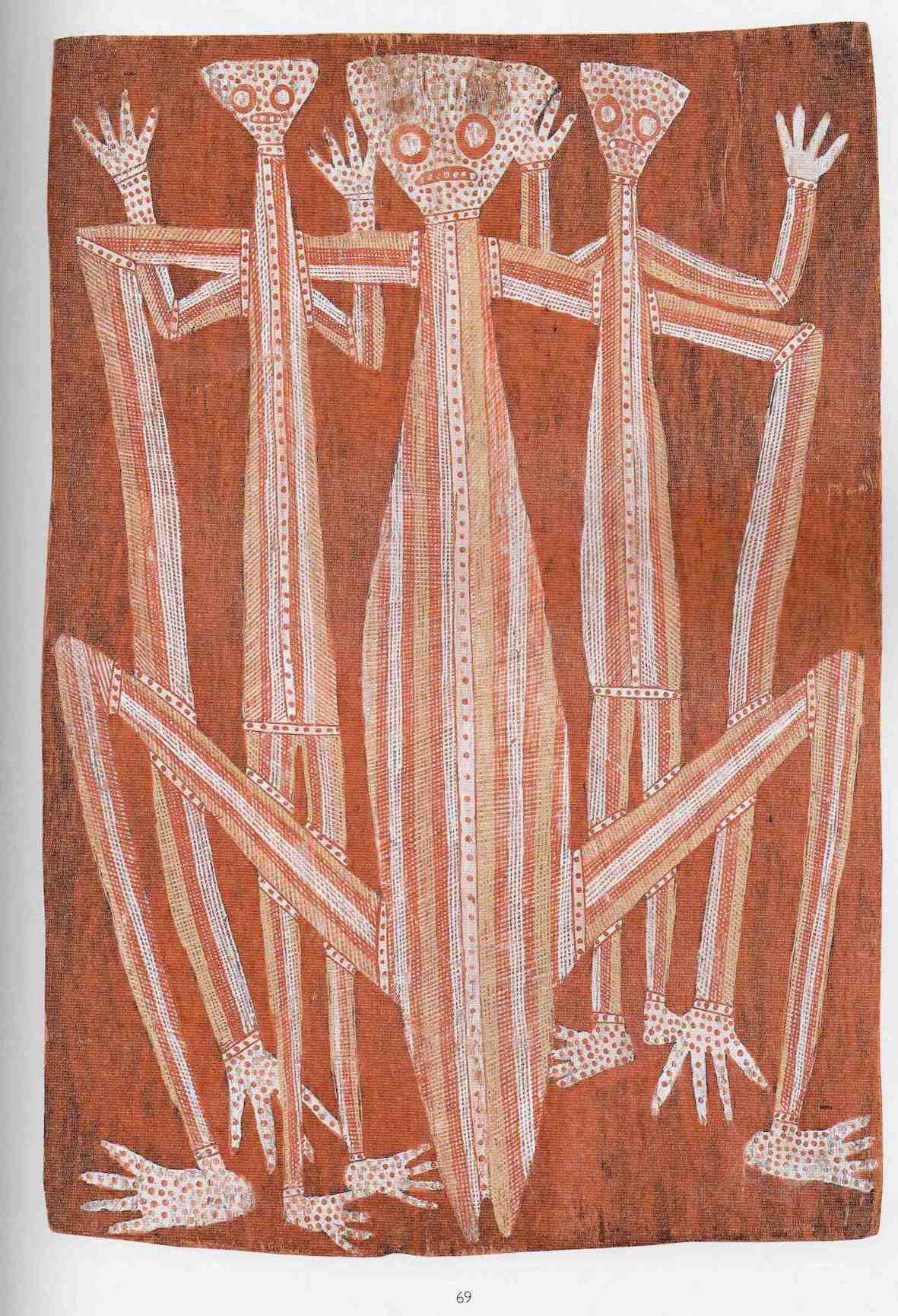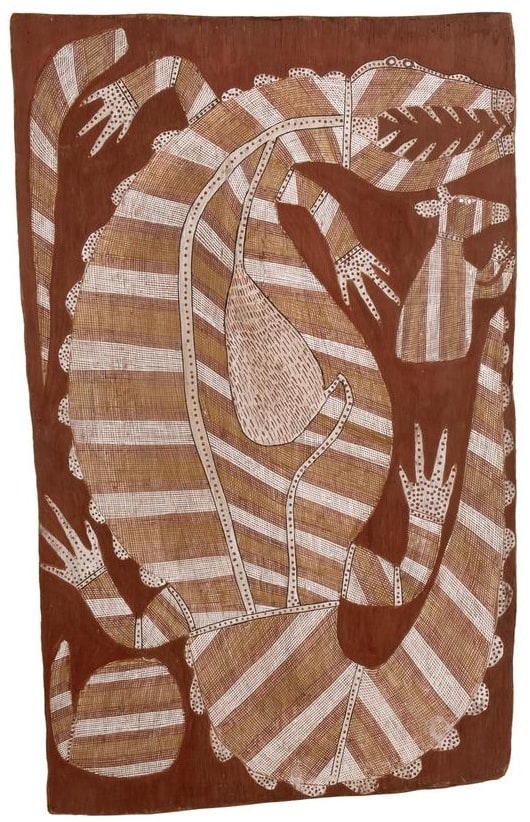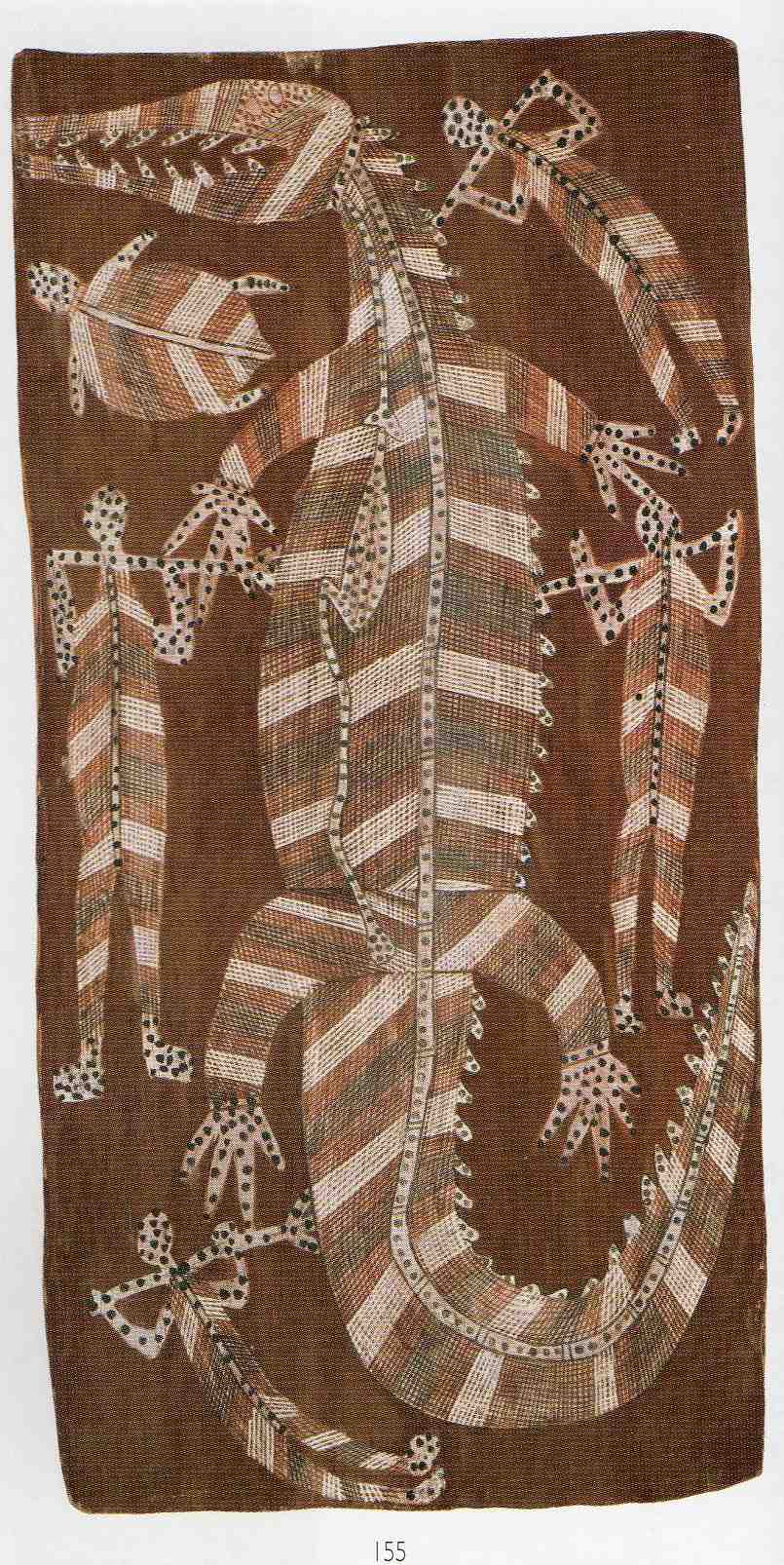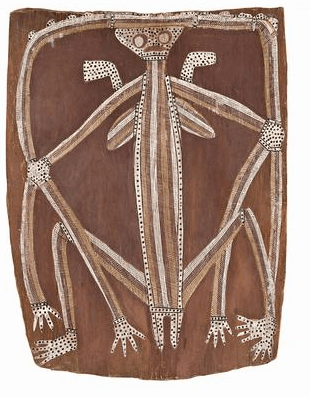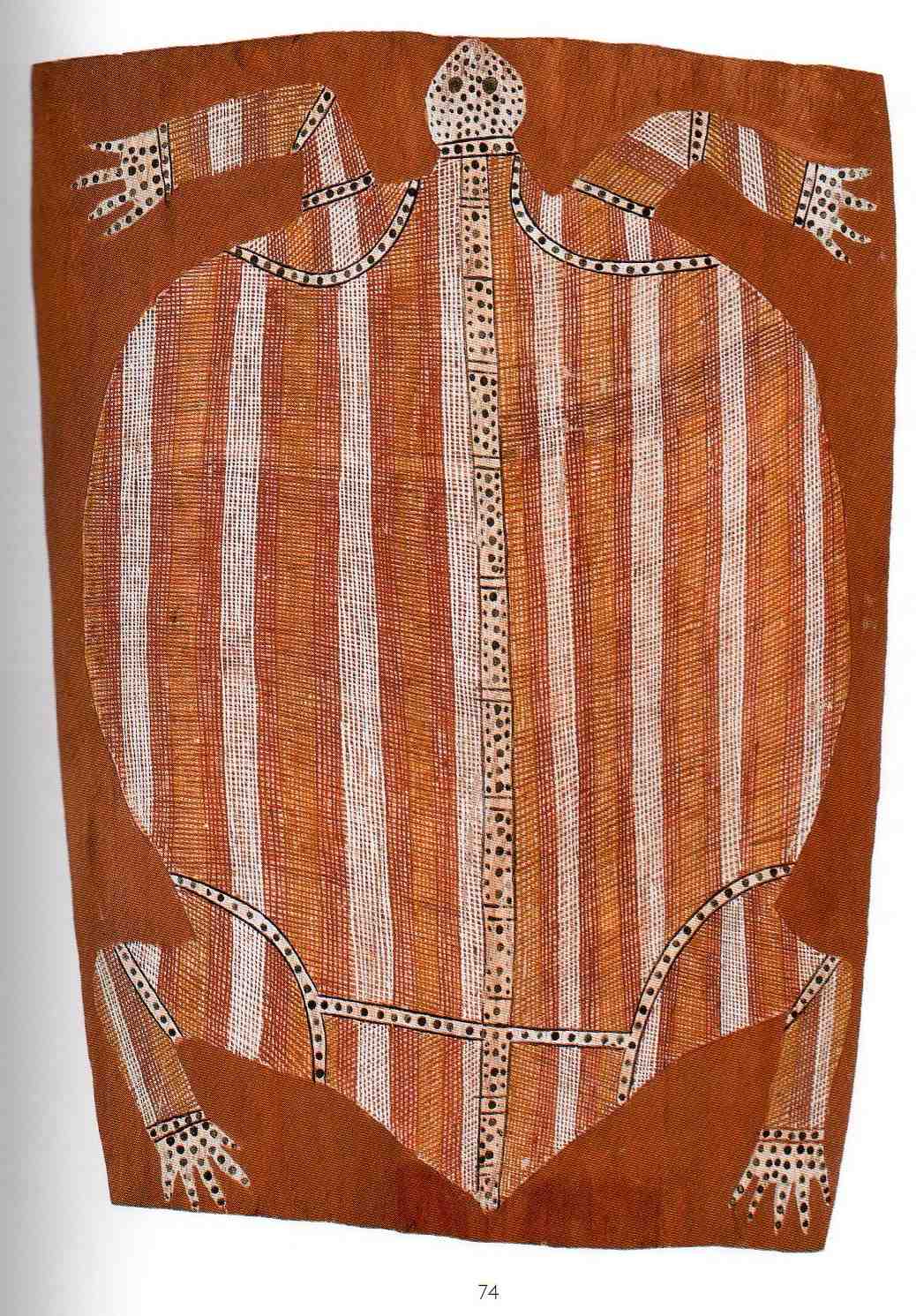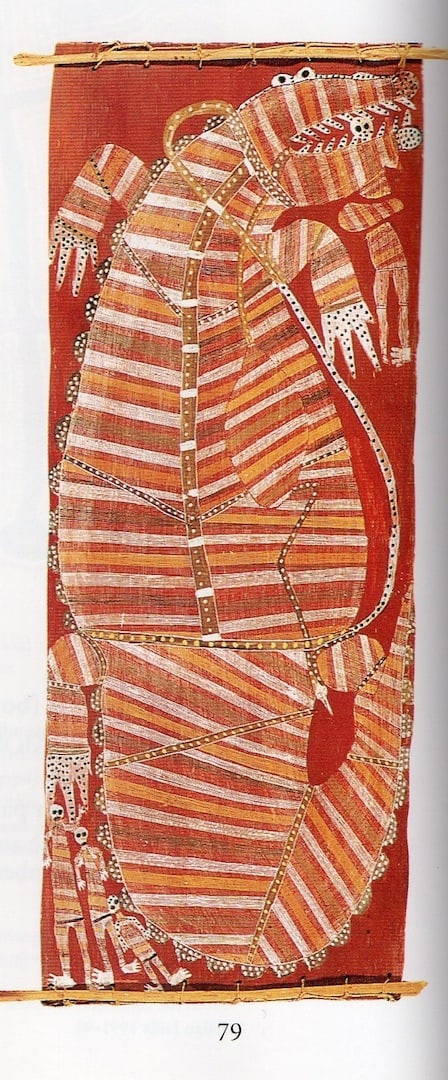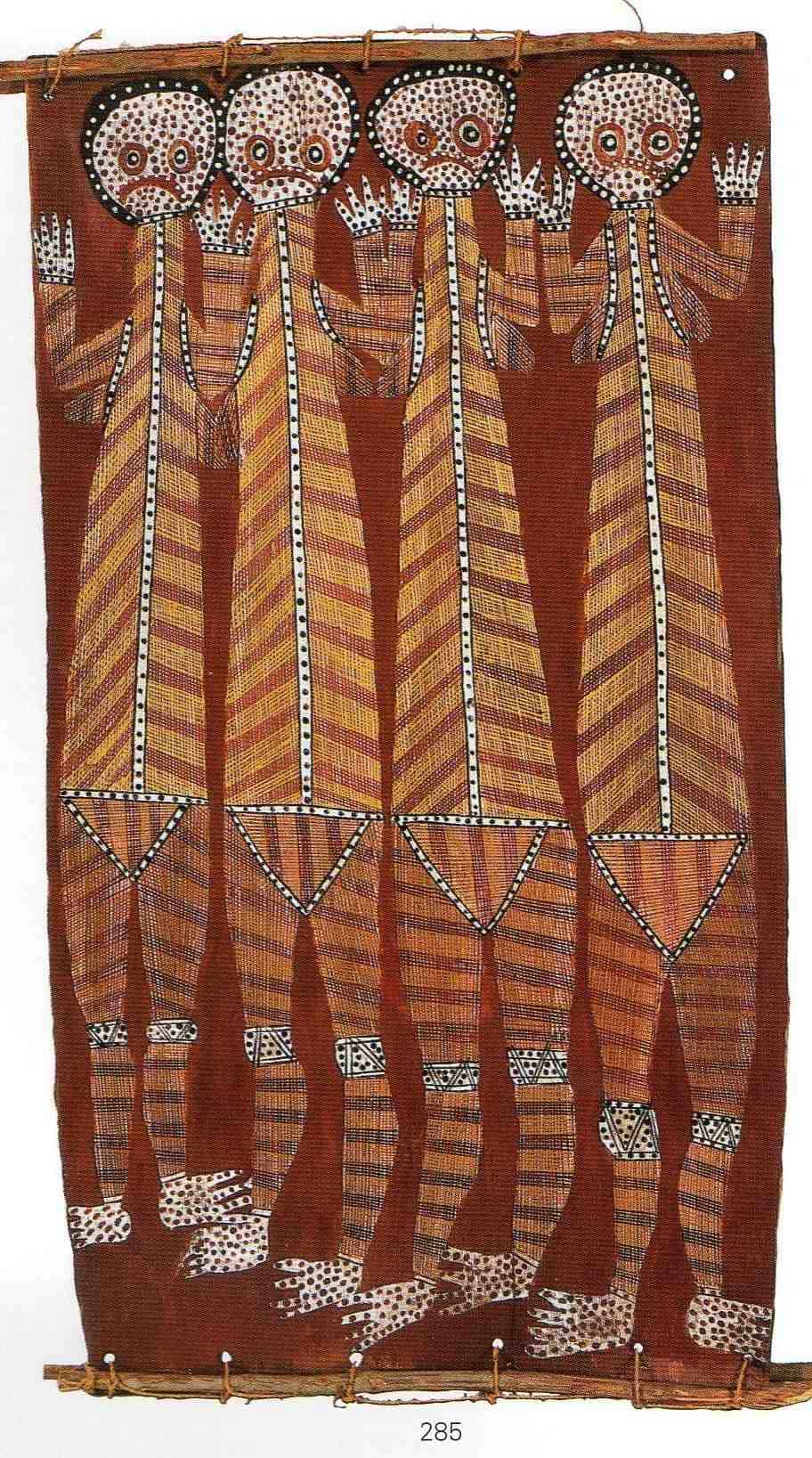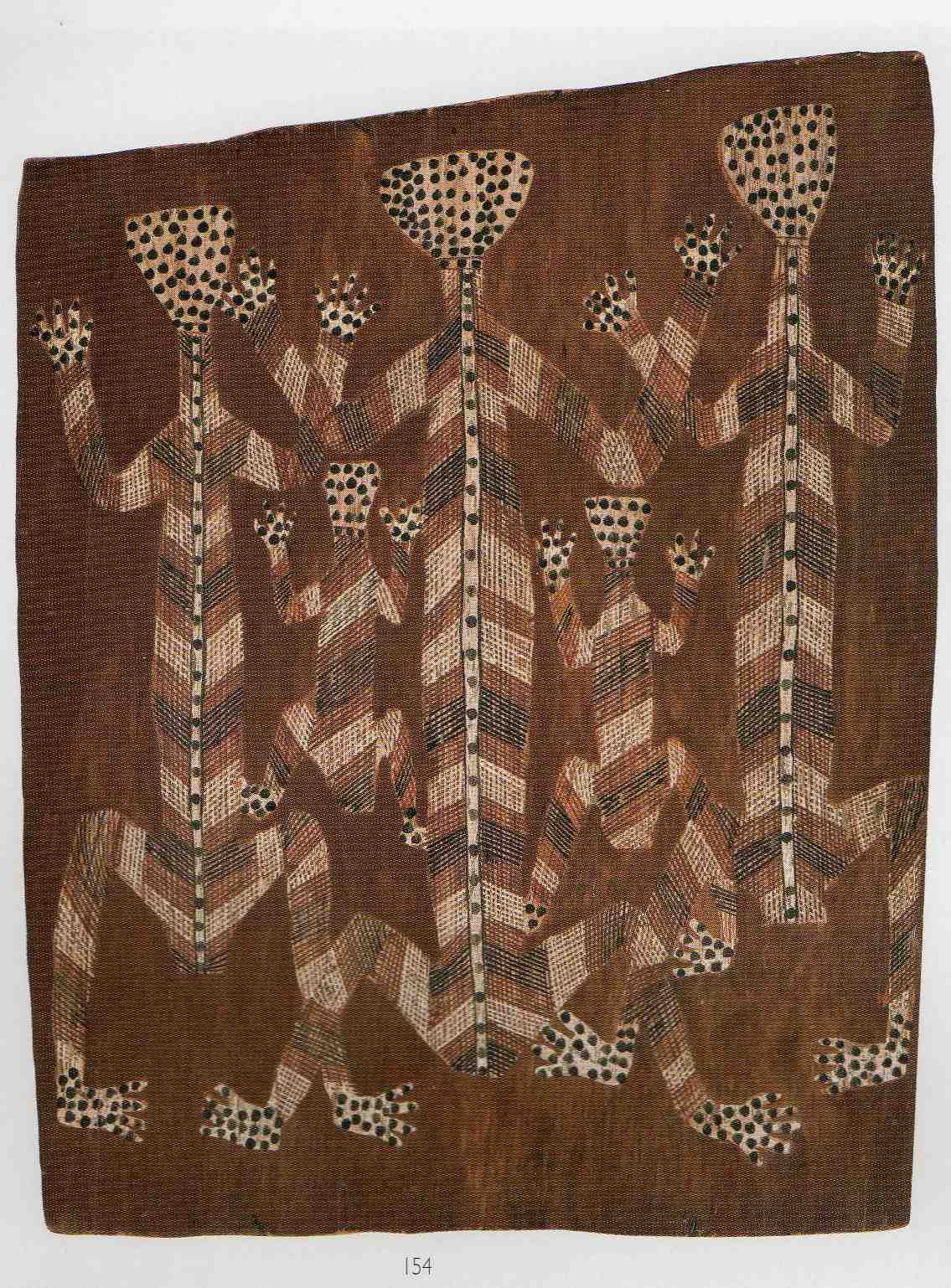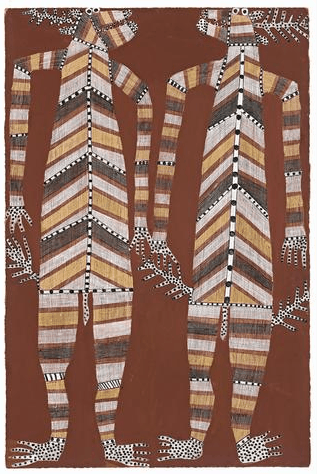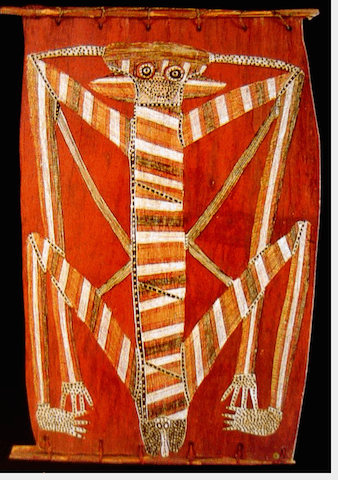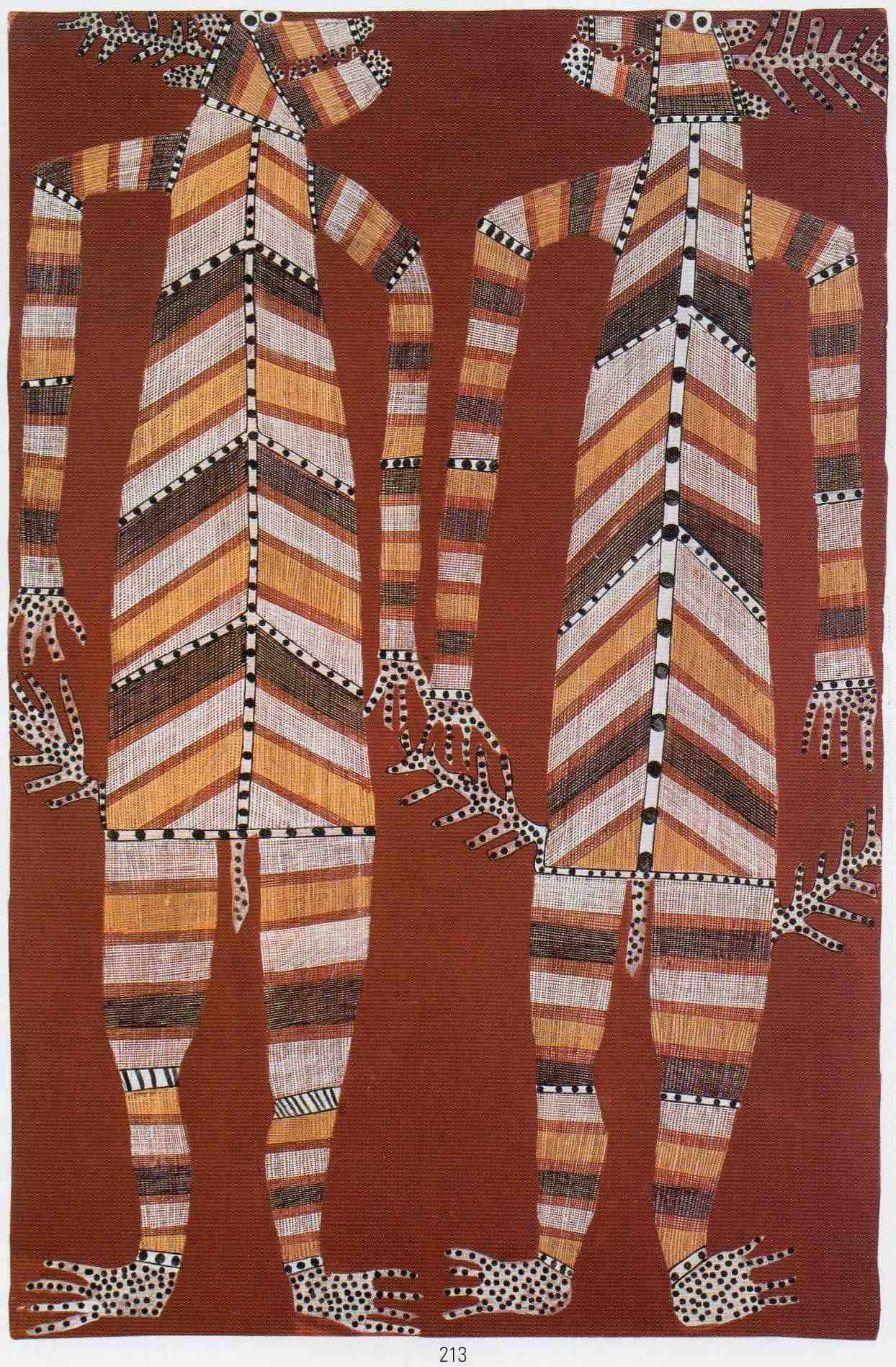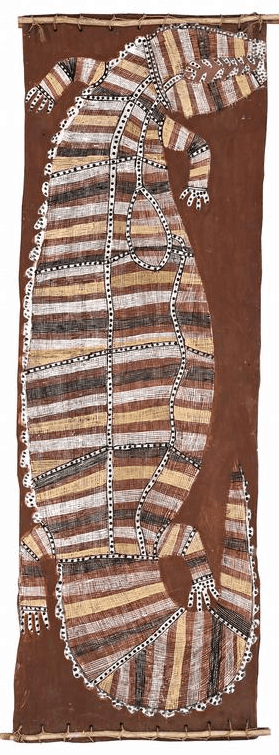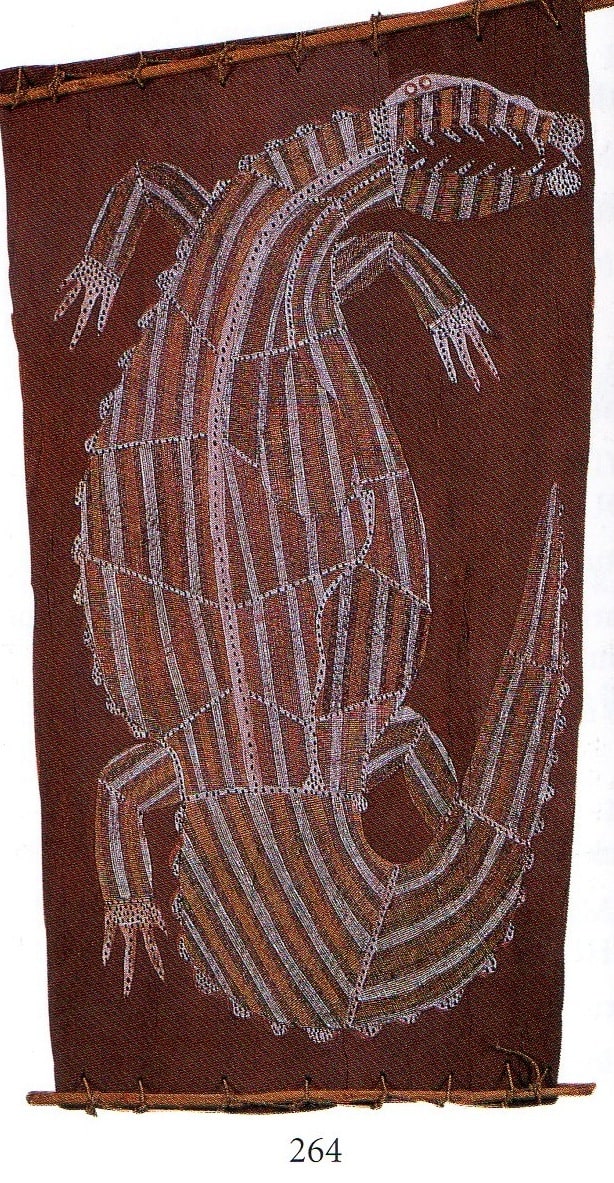Mick Kubarkku Oenpelli Artist
Mick Kubarkku learned to paint watching his father, Ngindjalakku. He created paintings for sacred Arnhem Land ceremonies on Rock shelters. Later he started selling bark paintings at Maningrida in the northern territory.
The aim of this article is to assist readers in identifying if their bark painting is by Mick Kubarkku by comparing examples of his work.
If you have a Mick Kubarkku bark painting to sell please contact me. If you want to know what your bark painting is worth to me please feel free to send me a Jpeg. I would love to see it.
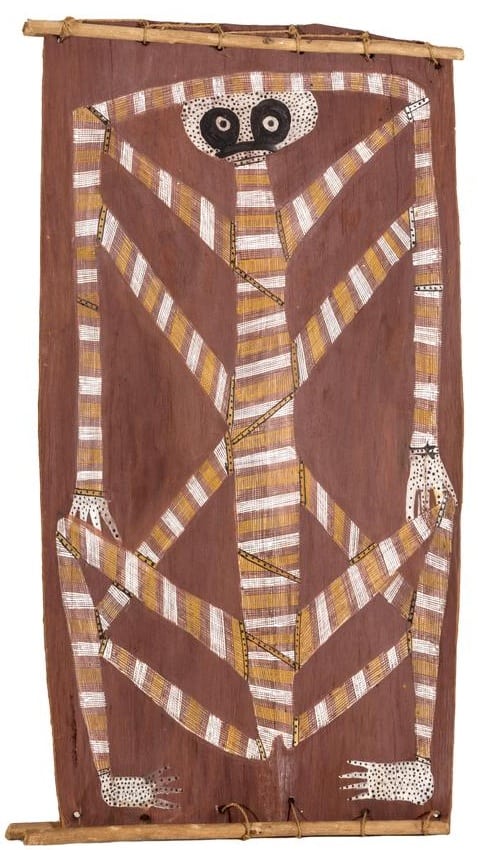
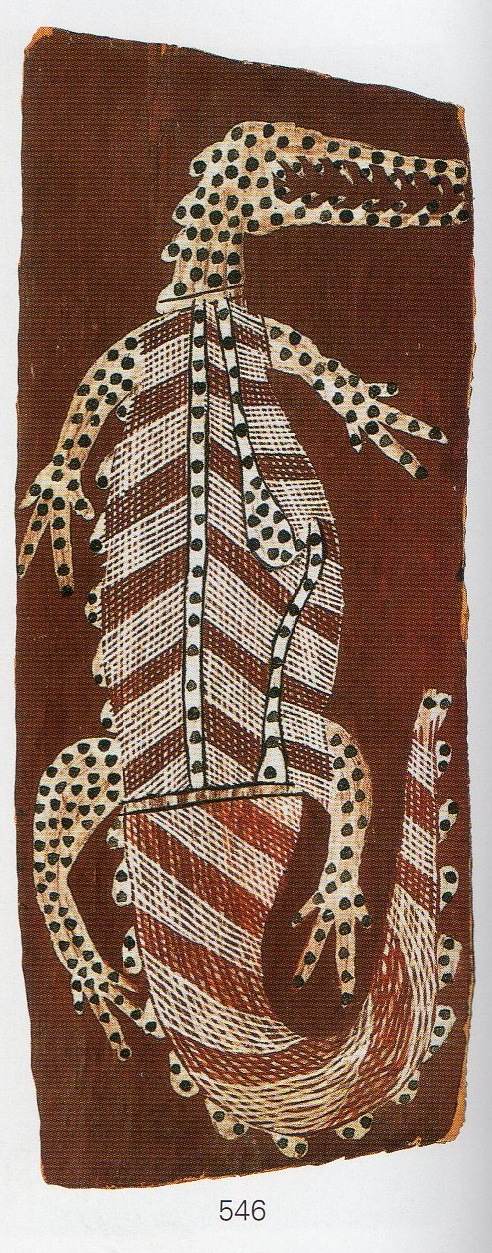
Style and Subject
His style is semi-traditional with many of his paintings similar to those found in rock shelters.
The main difference is that Kubarkku used more crosshatching (Rarrk) than in earlier Oenpelli rock art. This is no doubt an influence from his time spent in Mandigrida where cross-hatching is popular. He produced figurative work, with a distinctive space around his depictions of spirits and totemic animals. Other distinctive features of many of his works include that his subjects have a white face covered with spots. The limbs of his spirit figures have non-wavy limbs with strong angled joints. He often omits eyes or other facial features.
Many of his later works on bark are very large some up to 1.3 meters long. He uses a combination of rarrk designs associated with the Mardayin ceremony and Oenpelli figures and spirits. Mick also did a few sculptures of mimih spirits and painted some hollow log bone receptacles.
Amongst his works were spirit beings from Arnhem Land. These include the Rainbow Serpent, the lightning spirit and Kodjok Bamdjelk, the pandanus spirit. He also paints namorroddo, yawk yawk and mimih spirits. It is these paintings of spirits that are most popular with collectors.
He also painted fish, spirit kangaroo’s echidna and namanjwarre (crocodile) and lambalk (sugar glider).
Biography
Mick was born in 1924 at Kukabarnka in Arnhem Land in the Northern Territory Australia and was of the Kunwinjku people. He began painting at Oenpelli (northern Territory) shortly after the Second World War before moving to Maningrida in 1957. In Mandigrida he and David Milaybuma became the first regular commercial painters. His representations of malevolent spirit beings and ancestral figures resonate with power. They reflect a direct connection to the ancient tradition of Oenpelli painting on rock surfaces, a tradition that has since ceased.
It wasn’t until 1995, that Mick had his artistic vision recognised by the European world. His first exhibition called Rainbow, sugar bag and the moon was at the Museum and Art Gallery of the Northern Territory.
Mick along with Murra Murra and Bardayal was one of the last of a generation of Arnhem Land painters who could interpret images in rock galleries.
Kubarkku is sometimes also spelled Kuparrku or Kubarrku
References and Extra Reading
Keepers of the secrets: Aboriginal art from Arnhemland
Crossing Country: The Alchemy of Western Arnhemland art
The Rainbow Serpent
Aboriginal people believe that Ngalyod, the Rainbow Serpent, created many sacred sites in Arnhem Land. Characteristics of Ngalyod vary from group to group and also depend on the site. He can change into a female serpent, and has both, powers of creation and destruction. Ngalyod is most strongly associated with rain, monsoon seasons, and the rainbows that arc across the sky like a giant serpent. He is most active in the wet season. In the dry season, he rests in billabongs and freshwater springs. When he rests he handles the production of water plants such as waterlilies, vines, algae, and cabbage tree palms.
When waterfalls roar down deep gorges, that Ngalyod is calling out. Large holes in stony banks of rivers and cliff faces are his tracks.
The rainbow serpent is deeply respected because it will swallow people who offend him. If Ngalyod swallows people during floods that he has created, he regurgitates them and they transform into new beings by his blood.
Aboriginal people respect sacred sites where the Rainbow Serpent resides. Near these sites, cooking is not allowed. Cooking near the resting place of the great serpent will incur his wrath. Ngalyod can cause sickness, accidents and great floods, which make it easier for him to swallow his victims.
Although Ngalyod is generally feared throughout the Stone Country, he is a friend and protector of the tiny Mimih Spirits.
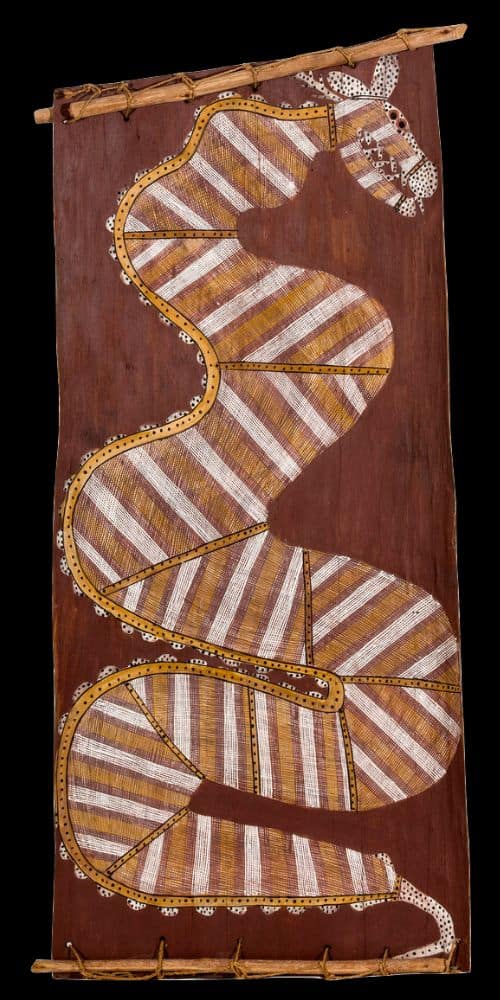
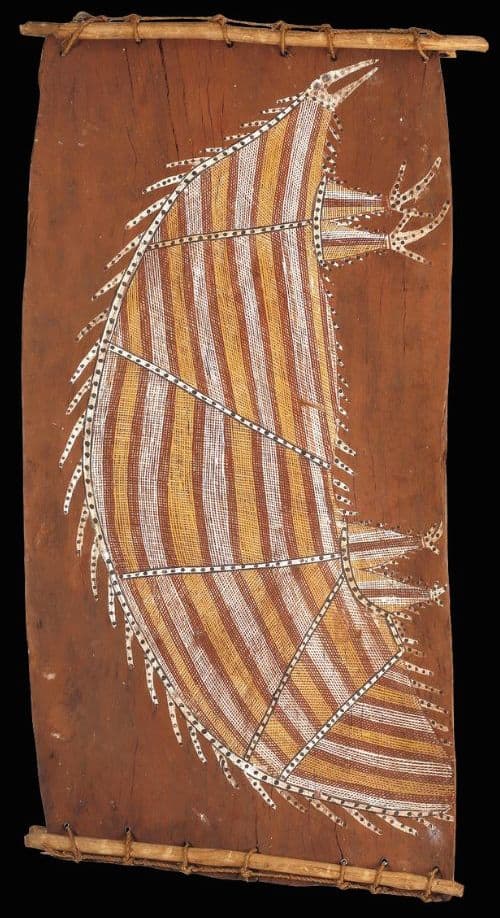
Ngarrbek, the Echidna
Namanjwarre the Crocodile
Namanjwarre, the saltwater crocodile, Corcodylus porosus. The crocodile totem Namanjwarre is a Yiridja moiety totem.
The estuarine crocodile or Namanjwarre is the protector of the sacred objects of the Mardayin ceremony. The Mardayin ceremony is an important rite of passage for Kuninjku language speakers of Western Arnhem Land. Namanjwarre would devour anyone who transgressed from the correct ceremonial protocol.
The upper Liverpool River and Maragalidban Creek areas had lots of these crocodiles. Crocodiles are rarely killed for food but their eggs are sought after during the wet season when the females are nesting. A major crocodile sacred site exists near the outstation of Kurrindin, in the Liverpool River District.
The treatment of the infill of Namanjwarre is the same used on Mardayin ceremonial objects. Mardayin objects decorated with the same bright patterns of crosshatching and dotted lines. Mardayin objects are secret and sacred. The use of the same design within the crocodile, thus, shows the interconnection of the crocodile and the Mardayin ceremony.
Namanjwarre is an important totem and is danced in the sacred and secret ritual of the Mardayin ceremony.
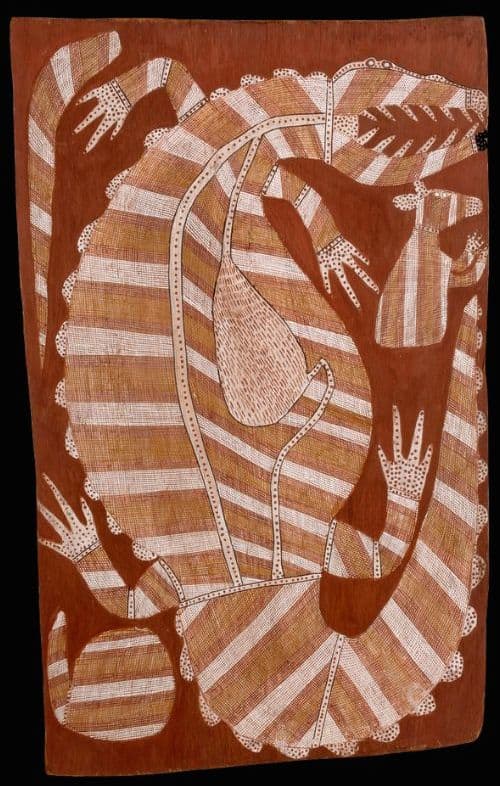
All images in this article are for educational purposes only.
This site may contain copyrighted material the use of which was not specified by the copyright owner.
Western Arnhem land Artists and Artworks
Mick Kubarkku bark painting Images
The following bark paintings are not a complete list of works but give a good feel for the variety and style of this artist

